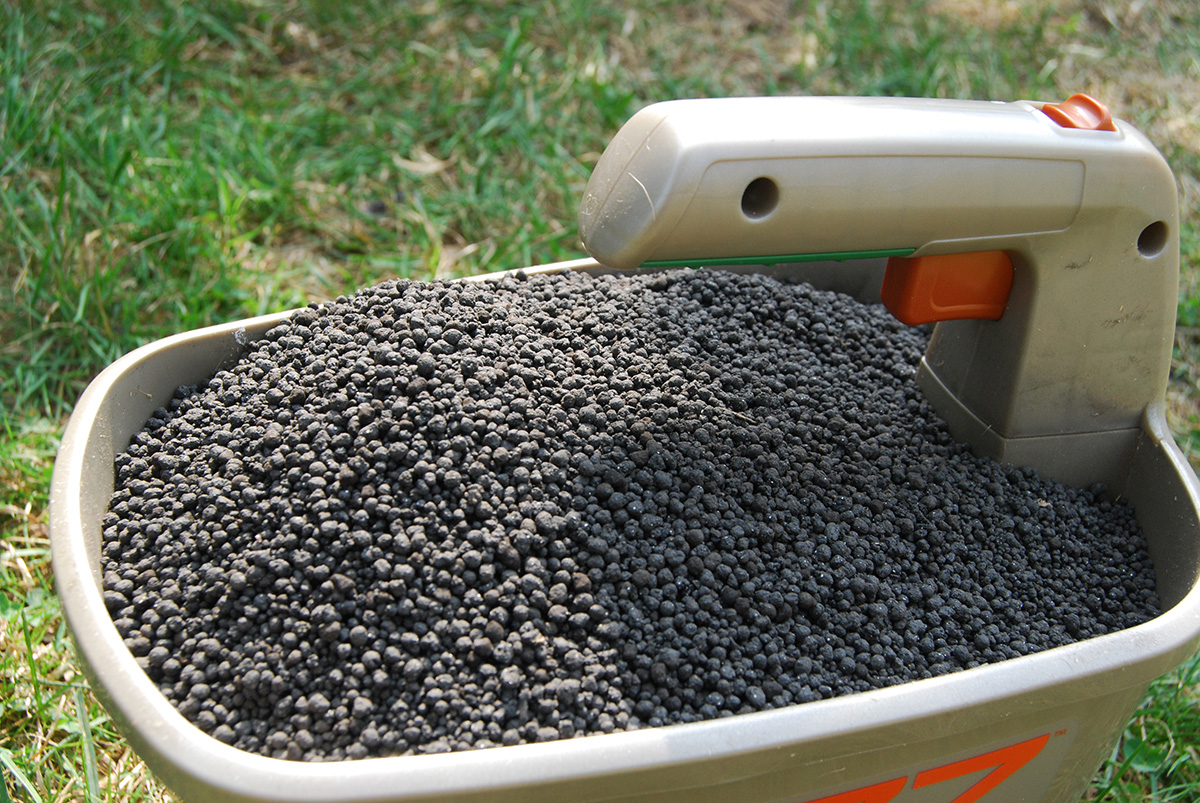Adopt a Fertilization Schedule
The first step in developing your fertilization plan is to set the right fertilization schedule for your lawn.
Turfgrass has a heavy nutrient requirement that is influenced by many things, including grass species type, age of the lawn, soil health, and maintenance practices. Therefore, you need to consider three factors—soil test results, desired lawn quality, and maintenance preferences—that will impact the amount and timing of any fertilizer applications you will need to grow a healthy lawn. For example, a low maintenance turfgrass species in a mature lawn may not need fertilizer inputs if grass clippings are returned and soil health is maintained.

Before applying fertilizer to your lawn, always consider soil test results, desired lawn quality, and maintenance preferences. | Photo Credit: Janice Milanovich, Illinois-Indiana Sea Grant
Choose a maintenance level to help you decide on a fertilizing schedule in the table below.
- Low Maintenance = Low priority placed on lawn appearance, minimal inputs.
- Medium Maintenance = Some priority placed on lawn appearance; average input of time, money, and upkeep.
- High Maintenance = High priority placed on lawn appearance; considerable time, mowing, and money to maintain.
The table below shows fertilization schedule options for cool-season turfgrasses typically found in the upper Midwest, based on desired maintenance level.
| Low Maintenance | Medium Maintenance | High Maintenance* | |
|---|---|---|---|
| May | Fertilize | ||
| July | Fertilize (only on irrigated lawns) | ||
| September | Fertilize | Fertilize | Fertilize |
| November | Fertilize | Fertilize |
May fertilization – top dress with compost/soil mix or fertilize with slow release fertilizer (0.75 to 1 pound of nitrogen/1,000 square feet)
July fertilization (1st through 15th) – only fertilize irrigated lawns; slow release at half rate so as not to promote excessive growth and disease (0.75 pound of nitrogen/1,000 square feet)
September fertilization (1st through 15th) when daytime highs are no longer in the 90’s. Slow and quick release nitrogen. (1 pound of nitrogen/1,000 square feet)
November fertilization within 1 week of final mowing of year. Quick release (or soluble) nitrogen source. (0.5 to 1.0 pound N/1000 square feet)








